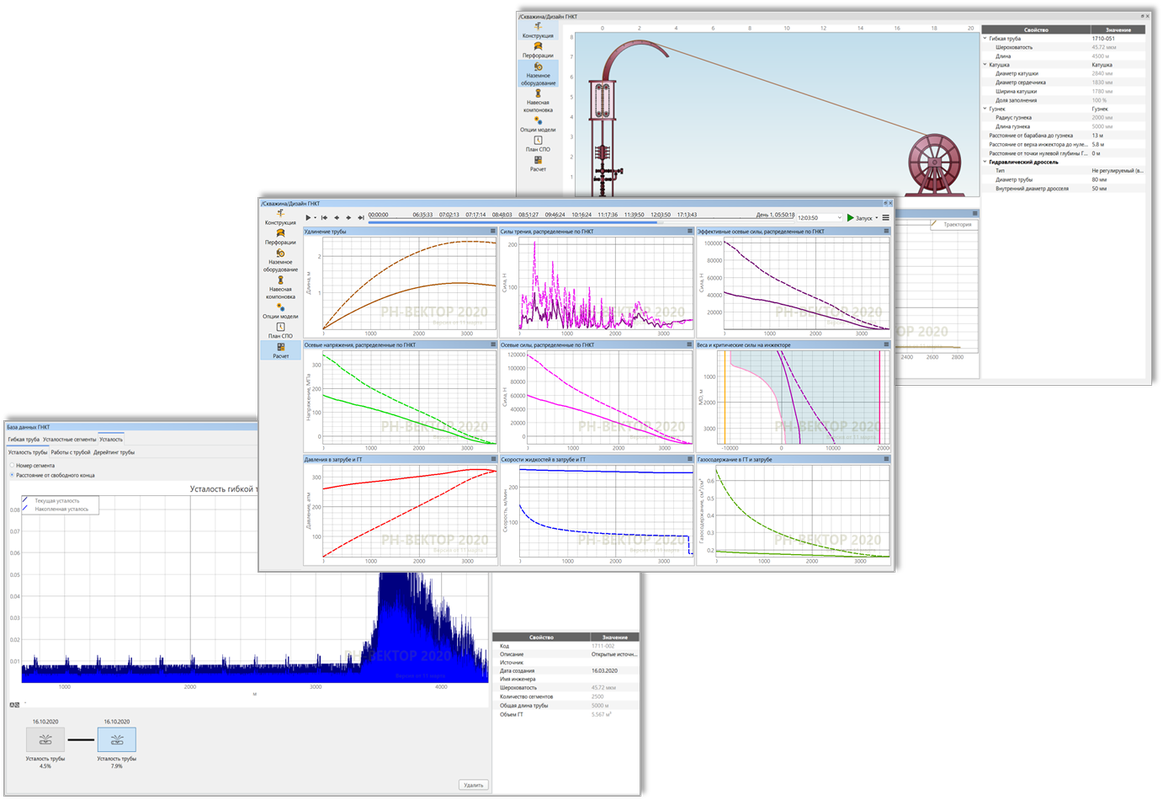
Coiled Tubing Simulator
RN-VECTOR is an industrial software for mathematical modeling and analysis of CT technological operations.


RN-VECTOR is an industrial software for mathematical modeling and analysis of CT technological operations.

Coiled tubing is used in oil and gas wells to perform a variety of technological operations: borehole flushing and bottomhole normalization, inflow induction and well development, milling of restrictions to restore the flow area, fishing operations, installation and drilling of cement bridges and packer plugs, acid treatments, geophysical surveys , hydro-sandblasting perforation and others.
Coiled tubing simulator is used in oil and gas industry for planning, managing and analysis of the CT technology application.